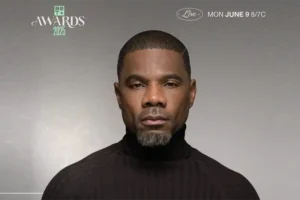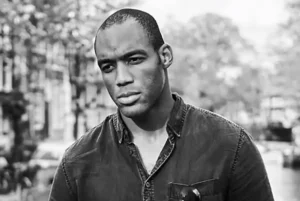By: Omowale Luthuli- Allen
As portrayed in the captivating documentary ŌĆ£Summer of Soul,ŌĆØ the 1960ŌĆÖs was a time when the Negro and the colored identifications for Black people died. In 1966, a talent deserving of wider recognition graduated from Phyllis Wheatley High School in San Antonio, Texas. Wilbur Eusan and wife knew about the upside of their elder daughter, Lynn Eusan, while the world awaited her brilliant explosion.
This supernova with an Andromeda sized heart decided to enter a public university in Texas.┬Ā LynnŌĆÖs mom had a confidant and lifelong friend in Houston, Richie Dell Moore of the Silk Stocking, Third Ward ŌĆō Houston Texas. Ms. Richie Dell Moore was the musical north star of the Moore family, talented daughters Anita and Angela Moore, and saxophonist Bernard Moore. Having a family away from home was a reassuring factor in convincing the Eusans to bless LynnŌĆÖs decision to attend the University of Houston during the summer of 1966.
Lynn was an accomplished high school journalist at Phyllis Wheatley and the University of Houston had an emerging top notch journalism department.
The University of Houston had transitioned from a private to public university in 1963. Ezekiel Cullen, trustee of the school, boasted that no Black person would ever enter the University of Houston. Simultaneously, Black students from East Texas, the inner city Houston, the 44-Acres Homes and Southeastern Louisiana took the fork in the road to UH. Prior to the influx in 1965 and 66, notable was the presence of a handful of star scholarship Black basketball and football players.
At the time of LynnŌĆÖs entrance, UH had not made any provisions to include Black students into the mainstream of campus life.┬Ā This deficiency led to the creation of the Committee on Better Race Relations (COBRR) under the leadership of upper-classman Gene L. Locke. Lynn provided more than ample leadership as Vice President and a movement was born.
Clusters of Black students from the 44 Acres Homes, Veronica Dorian Becnel, Mary Bowers, Sherra Aguirre, Michelle Barnes, Wilbur Taylor, Calvin Stephens, Doris Jones, Sue Smith and Jackie Wilson were turnkey ready to fight for inclusion and equity at the school. The kinship of Lynn Eusan and these stalwarts would establish a base for lasting change.
Faculty members Richard Haynes, Donald Lutz and Ban Henderson answered the call and became sponsors for the students. Rev. Bill Lawson and his church weighed in by mentoring the young lions. Esther King, renowned community activist from Acres Homes, supplied his oratory and talents to assist the student-activists.
This movement intersected with a growing tsunami of change in America. The American cauldron consisted of the anti-Vietnam War Movement, the fight for women’s equality, environmental justice, and civil rights. The boiling got hotter with the assassinations of Martin Luther King Jr. and Medgar Evers, Robert Kennedy and President John F. Kennedy, Patrice Lumumba and Malcolm X. Overlay this kettle with Black students on the move at San Francisco State, Cornell University and Texas Southern University and the uncompromising brassiness of the Black Panther Party. Add the soundtrack of Nina Simone and Curtis Mayfield and you had the river overflowing its banks on Wheeler Avenue and Cullen Boulevard.
During the summer of 1966, Lynn started a summer enrichment program for the kids from the bottoms of the Third Ward. During the enrichment program, she mentored and taught young girls how to sew and swim. Without missing a step, she cut her journalistic teeth and chops at the Voice of Hope newspaper and the Forward Times newspaper.
When a young boy drowned at the toxic landfill in Sunnyside, she put her body on the line protesting and landing in jail with Gene Locke and a cadre of activist students from the University of Houston and Sunnyside. Exuberant in jail and exuberant in the classroom.
She joined the Alpha Kappa Alpha sorority and blurred the distinction between soror and activist but never forgot her quest as a scholar.
COBRR transitioned to the African Americans for Black Liberation-AABL. AABL became a community organization with its based on the campus while shunning social integration and focusing on Black empowerment.┬Ā Central to the AABL legacy was the campaign to elect Lynn as UH homecoming queen. The grand idea was to have the dashing Lynn Eusan as a pillar of fire leading the fight for 10 transformational demands. The 10 demands called for more Black faculty, an African American Studies Department, Black counselors, a brisk and planned recruitment of more Black students, living wages for menial workers and more educational support for surrounding Black neighborhoods and schools.
During the summer of 1968, she united with Deloyd Parker and other community builders to co-found the SHAPE community center.
Students of all colors embraced the Afro-wearing Queen, and she topped a dozen other contestants. Her leap for joy in the Astrodome during the homecoming game went viral and was broadcast around the world.
On the journey to become the first black homecoming Queen at a predominantly white university in the south, a backlash ensued, and Lynn endured death threats. She was mocked by white fraternities through black-faced minstrel shows. These fraternities disgraced themselves and Lynn was unfazed and never broke her magnificent and noble composure.
The path to Homecoming Queen was challenging and required a nobleness of character and a nimbleness of tactical responses. Lynn had to align her formidable personal talents to sync with a transformational idea in a near revolutionary period. She had to be a gymnast that performed intricate maneuvers without succumbing to the twisties. A bad landing would complicate her personal quest for the championship and slow down the fight for a more perfect democracy at the U of H.
The intellectual rigor was never in question. Did she have the emotional agility to avoid getting stranded in mid-air? Did her tool box have the tools to regulate the pressure and keep attaining the AŌĆÖs and BŌĆÖs. WAIT is an acronym for What Am I Thinking. A clue to her mental state is provided for her go to power technique.┬Ā For relaxation, she would start her turntable in her dorm room and chill to John Coltrane’s album A Love Supreme. Lynn not only rose to the moment, but she also transcended the moment.
On the night that she won the Homecoming Queen title, The University of Houston defeated Tulsa on that homecoming night 100 to 6.
During a protest that was equally a mini- riot and police provoked disturbance, Lynn was one of fourteen student activists that were charged with property destruction and inciting to riot.
Local legendary attorneys Raymond Jordan and Bobby Caldwell defended the students and the state failed to convince a jury of their guilt. Lynn was bruised by the experience but did not despair and she accelerated her academic diligence so that she could graduate on schedule. The community pitched in nickels and dimes to contribute to legal fees that exceeded the pro bono costs. Heroism abounded.
There is an African proverb that says, no matter how long the winter, spring is sure to follow. Today, after five decades, the University of Houston offers a degree in African American Studies from a distinguished department.
Tragedy struck on the night of September 10, 1971. Lynn had successfully graduated from U of H. The social system spawned an assailant that had stabbed and murdered her. The man that was charged in her death was acquitted and to this day her murder is unsolved.
Most of her friends are convinced that the murderer was a Black man and was not a politically inspired crime. The community is still trying to heal.
At the memorial service at Walls Chapel AME Zion church, a child that she mentored remarked that Lynn had taught her to sew the dress that she wore.
She is interned in San Antonio and buried in the African American cemetery on the east side of San Antonio. She is survived by a little sister and a host of uncles, nieces and nephews.
Yes, a lot of drama, but we cannot deny that the world is better for her efforts, her life was not in vain, and the world has seen a GREAT PERFORMANCE.
┬Ā









